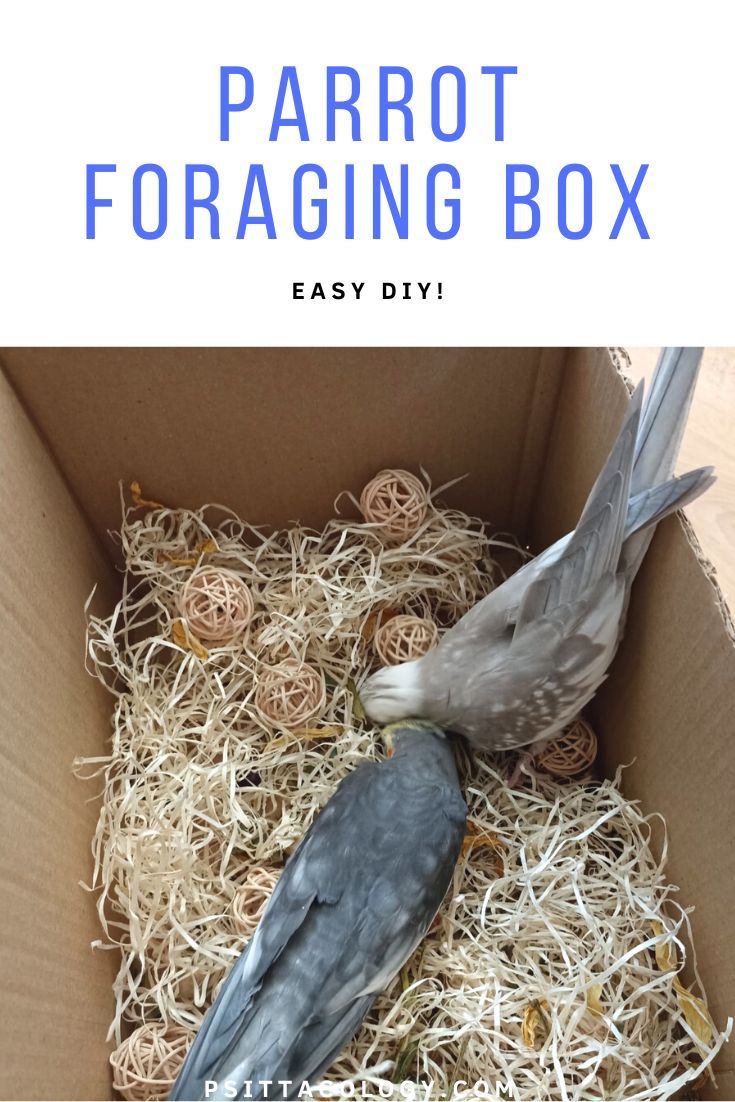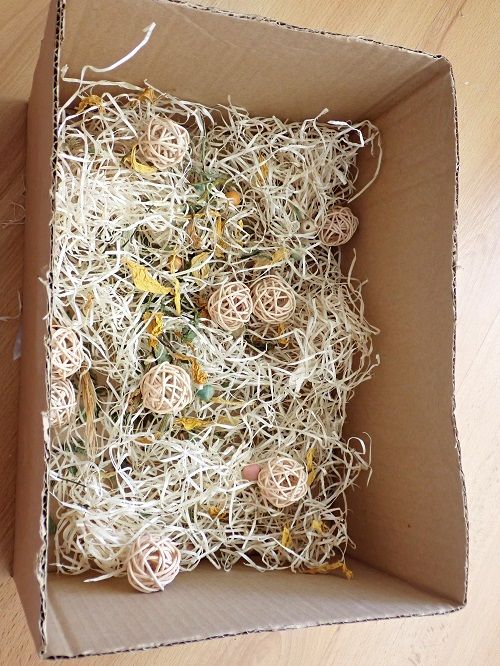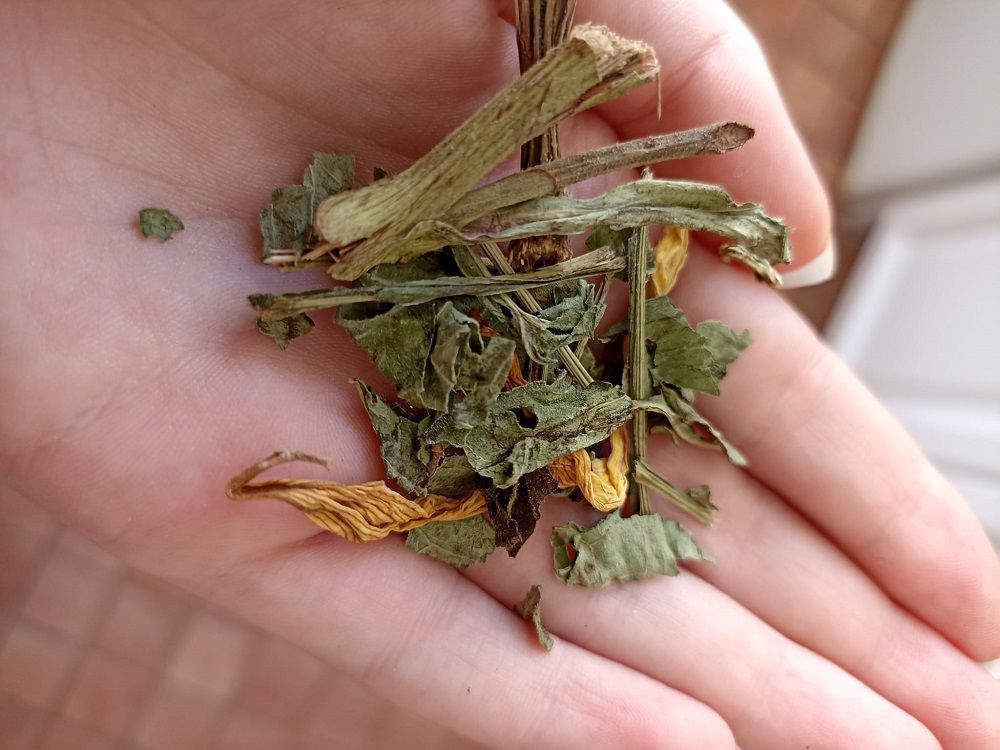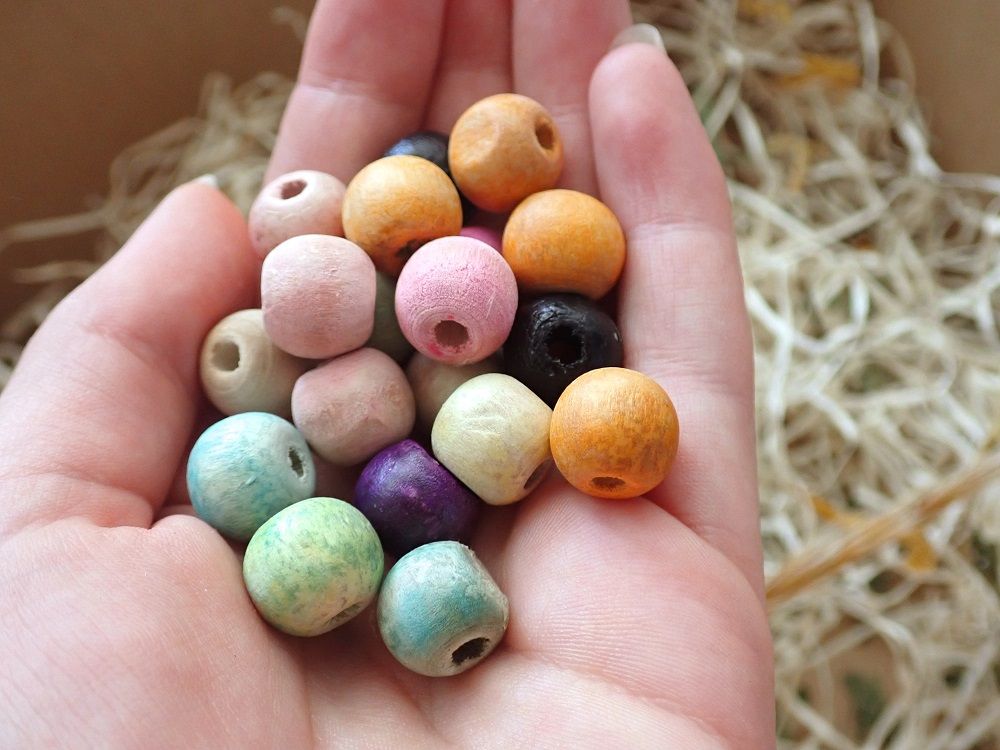Looking for something to keep your parrot entertained? Foraging is the perfect solution! Our feathered friends naturally spend much of their day searching for food, so why should we place their meal in a bowl and be done with it? Challenge your parrot’s smart brain by making it work for its food.
Let’s have a look at how to make a parrot foraging box that will keep your bird busy for hours.
This post contains affiliate links. If you make a purchase, a small percentage will go directly to Psittacology at no additional cost to you. Thank you for supporting Psittacology!
What is a parrot foraging box?
There are all sorts of toys and items available that can stimulate foraging behavior in your parrot. Most online parrot supply stores will sell foraging boxes, which usually consist of a cardboard container filled with something like shredded paper and various colorful bits and bobs that parrots like.
The point here is to fill the foraging box with treats or small toys and encourage the bird to go looking for it. It makes mealtime much more interesting and is a great way to provide enrichment.

Why is foraging important for parrots?
Why would you make a parrot foraging box? If you’re familiar with the concept of foraging for parrots, you probably already know the answer to this question. If you haven’t introduced foraging options to your parrot yet, it’s time to start!
There are multiple advantages to foraging, but the basic premise is that our practice of simply putting a bowl full of food in front of our parrots isn’t the best way to go about mealtime.
In the wild, these birds spend most of their day having to find their next meal. Once they’ve found it, in some cases, they have to figure out how to get to it. They’ve evolved to be smart enough to solve these problems, and it’s a waste not to let them use those keen brains.
Using items like foraging toys and foraging boxes which make food more difficult to access, as well as presenting food in its natural form, are great ways to encourage these natural behaviors in your pet parrot. It’s like combining food and play, making it the perfect boredom buster.
Since boredom can result in destructive behavior, excessive vocalization, aggression and even feather plucking in parrots, it’s not difficult to see how important it is to keep yours busy with activities like this.
If your bird has never been allowed to forage before, it might need a little introduction, but I promise the majority will get the hang of it quickly and actually enjoy it a lot.
Did you know? There is loads of evidence suggesting parrots need something to do and that foraging is an ideal solution. Contrafreeloading, which is when an animal prefers to work for its food even though it has an easy food source available, has been detected in these birds.
Further reading
Here’s a list of sources if you’d like to do some further reading about captive parrots and foraging:
- Contrafreeloading in African grey parrots
- Contrafreeloading and time spent foraging for various zoo parrots
- Foraging may help with feather plucking in African grey parrots
- Feather plucking may be related to redirected foraging behavior; foraging options may reduce parrots’ fearfulness; and more. See chapter 27.
In my own experience, offering a foraging box makes my birds spend much more time searching for their food. They exercise more and scream much less.

How to make a parrot foraging box
Let’s have a look at how to put together our parrot foraging box! I promise it’s super easy, and you may already have most of the materials at home. It’s also very customizable, so you can create your own spin on the box I made as an example for this article.
By the way: you can buy beautiful pre-made parrot foraging boxes online. But making one yourself is easy and fun!
Step 1: Gather materials
You won’t need much! Here’s what I use for a simple foraging box:
- Box (seagrass would be ideal)
- Bedding (bought or DIY dye-free shredded paper, safe wood shavings like aspen)
- Bedding extras (mold-free pet store hay, dried parrot-safe leaves, grasses and weeds);
- Accessories (old parrot toy parts, foot toys, anything that’s safe and small)
For my box, I went for a cardboard container filled with safe wood shavings and a dried herb mix meant for rodents as a base. I then added beads from an old toy and some small wicker balls.
The above are just suggestions. You can really use anything. Cut up unbleached coffee filters and muffin papers, smash a calcium block, forage for grasses: as long as it’s free of dyes, glues, pesticides and other harmful substances, it will work.





Step 2: Assemble
All you have to do to assemble your parrot foraging box is to ensure the bedding covers the bottom and then sprinkle any extras on top. If your parrot is an experienced forager, you can hide some food now, but if it’s not, it may need to see you introducing the treats in order to understand.
I just sprinkled some normal pelleted parrot food in my box. My cockatiels already know the drill.
Step 3: Introduce
Again, if your parrot is familiar with the concept of a foraging box, all you have to do is perch it on the rim and it’ll dive right in. If it’s naturally curious, it probably won’t need much introduction either. It’ll take a peek by itself and discover the food along the way.
If your parrot is new to all of this, it may need to see you place treats in the box. If it’s very fearful and ends up being scared of the box, it probably needs a few days to warm up to it.
In some cases, some training is needed to get birds to lose their fear and catch on to the idea. Don’t give up! Foraging is very beneficial.
If you have any more questions on how to make a parrot foraging box or if you’d like to share your own experiences, don’t hesitate to leave a comment below!
Sources & further reading
Coulton, L. E., Waran, N. K., & Young, R. J. (1997). Effects of foraging enrichment on the behaviour of parrots. ANIMAL WELFARE-POTTERS BAR-, 6, 357-364.
Lumeij, J. T., & Hommers, C. J. (2008). Foraging ‘enrichment’as treatment for pterotillomania. Applied Animal Behaviour Science, 111(1-2), 85-94.
Meehan, C., & Mench, J. (2006). Captive parrot welfare. Manual of parrot behavior, 301-318.
Smith, G. E. (2020). Presence and Degree of Contrafreeloading in African Grey Parrots (Psittacus erithacus).
